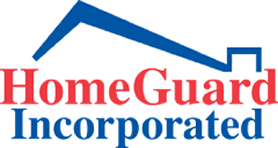As of April 2016, NHD companies can no longer be a provider of A-PLUS and CLUE 5-year Claims History Reports. CLUE Report provider LexisNexis advises that the property owner visit https://personalreports.lexisnexis.com and click on the “Additional Reports” tab to order a CLUE Report.
The Complete Package $99
The Complete Package includes the HomeGuard NHD Report, an ERIS Environmental Hazard Report, and a California Tax Data Report. Additionally, you can get up to a $40 discount when you use us for home inspection, termite inspection, and/or roof inspection, and HomeGuard HomeWarranty for your HomeWarranty needs. Please note that HomeGuard provides Termite, Home, and Roof inspection services only in the Bay Area, Central Valley, and Sacramento regions, but provides NHD reports statewide for California.
- The HomeGuard NHD Report is prepared by a qualified earth scientist with 20 years of experience in the disclosure industry. It includes all statutorily required disclosures, local County-level and City-level Safety Element, Airport Influence Area, Military Ordnance, San Francisco Bay Conservation and Development Commission, Megan’s Law, Commercial/Industrial, Radon, Naturally Occurring Asbestos, Methamphetamine, Mold, Right to Farm, Tsunami Inundation, Energy Efficiency, Endangered Species, California High-Speed Rail, and Gas Transmission Line disclosures and advisories.
- The ERIS Environmental Hazard Report provides accurate, comprehensive and easy to understand reporting of the most common and high-risk environmental hazards that can affect residential properties.
- The California Tax Data Report includes state-mandated Notice of Special Tax (for Mello-Roos Community Facilities Districts), Notice of Special Assessment (for 1915 Bond Act), Notice of Supplemental Tax Bill, Private Transfer Disclosure, and an in-depth breakdown of other assessments affecting the property.
The HomeGuard NHD Report & Tax Package $59
The Basic Package includes the HomeGuard NHD Report and a California Tax Data Report. Please note that HomeGuard provides Termite, Home, and Roof inspection services only in the Bay Area, Central Valley, and Sacramento regions, but provides NHD reports statewide for California.
- The HomeGuard NHD Report is prepared by a qualified earth scientist with 20 years of experience in the disclosure industry. It includes all statutorily required disclosures, local County-level and City-level Safety Element, Airport Influence Area, Military Ordnance, San Francisco Bay Conservation and Development Commission, Megan’s Law, Commercial/Industrial, Radon, Naturally Occurring Asbestos, Methamphetamine, Mold, Right to Farm, Tsunami Inundation, Energy Efficiency, Endangered Species, California High-Speed Rail, and Gas Transmission Line disclosures and advisories.
- The California Tax Data Report includes state-mandated Notice of Special Tax (for Mello-Roos Community Facilities Districts), Notice of Special Assessment (for 1915 Bond Act), Notice of Supplemental Tax Bill, Private Transfer Disclosure, and an in-depth breakdown of other assessments affecting the property.
FortressFire Wildfire Disclosure Report $140
Over 30% of homes in California are located in wildfire areas – and that number continues to grow. Wildfires are increasing in frequency, scope, and damage. For homes in high wildfire hazard areas, mitigation protections and regulatory requirements are confusing and costly, and insurance has become more expensive and difficult to secure.
The Wildfire Disclosure Report helps agents and their clients understand the wildfire-related dimensions of a property to facilitate residential real estate transactions. Buyers and sellers are armed with property-specific information to understand the property’s wildfire profile and proactively manage smoother transactions with fewer surprises.
Know Your Wildfire Risk
The property – start with a detailed inventory of the property features and understand the potential risk drivers.
- Satellite imagery and schematic views are provided.
- Defensible space and parcel boundaries are framed.
- Trees and structures are inventoried by a defensible space zone to provide clarity on the key wildfire risk drivers.
Takeaway Point: The more fuel surrounding a residence, the more vulnerable it is to wildfire ignition.
How to comply – understand how the property features may comply with AB 38.
- Aerial imagery outlines the property’s status against disclosure standards.
- Potential tree and structure spacing issues subject to compliance requirements are precisely noted.
Takeaway Point: Only a local fire authority can inspect and certify AB 38 compliance for a homeowner.
The Wildfire Hazard – understand the general wildfire risk in the neighborhood and area surrounding the property.
- Hazard maps depict the general wildfire threat to the property and indicate the likelihood of a wildfire occurring near the property.
- AB 38 is based on Cal Fire’s Fire Hazard Severity Zone Ratings – homes in High or Very High have to comply.
- Insurers use hazard maps when underwriting properties and deciding whether to insure and at what rates.
- Three separate hazard ratings are included so agents can understand how insurers may evaluate their property.
Takeaway Point: Properties with moderate to extreme hazard ratings may be difficult or expensive to insure.
How to protect – address vulnerabilities identified for the property.
Based on the property features, the report identifies where there is potential ignition risk.
When combined with hazard ratings, the vulnerabilities identified provide a comprehensive view of risk for insurance providers to consider.
The report follows the IBHS standards mandated by the insurance industry and the California Insurance Commission.
IBHS, backed by the insurance industry, has identified Wildfire Prepared Home requirements focused on roofs, vents, and fuels in defensible space zones.
The report frames an initial set of mitigation actions that can resolve identified vulnerabilities, including those of trees, venting, and secondary structures.
Mitigation cost estimates are included for vulnerabilities identified.
Takeaway Point: Onsite inspections are necessary to fully assess IBHS requirements, as some property elements can only be assessed while onsite. Certain insurers may require their own inspections as well.




